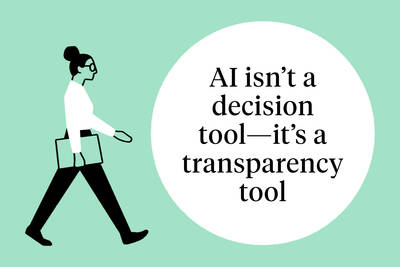But is that really the case? Are there sometimes better ways to motivate employees?
Several Kellogg School faculty members have researched which employee incentives work best. And, it turns out, our instincts about cold hard cash are not always right.
Promotions are the ultimate motivator. But not all companies have the ability to dole out promotions as incentives. What can you do to keep employees motivated if your organization’s structure is relatively flat, with few promotions to go around?
Michael Powell, an associate professor of strategy, Jin Li, an assistant professor of strategy, and a coauthor created a mathematical model to investigate. They discovered that companies that can’t offer promotions can still motivate employees by paying them more.
Another idea for startups and other fast-growing firms is the promise of new opportunities down the road as new teams or departments get added.
“Firms that are expanding are going to find it easier to use career-based incentives,” Powell says. “When the firm’s growth starts to level off, you have to adjust expectations, because you have significantly less flexibility.”
For companies that are not growing quickly, you might want to give stock options or award bonuses.
So employees like being rewarded with money. But dangling a bonus as an incentive comes with risks for employers.
Imagine a CEO who wants to meet the earnings target that triggers a big bonus, so he opts to cut maintenance expenses to a potentially dangerous level. Or a company that offers salespeople monthly bonuses for hitting a certain quota. On the last day of the month, the sales team is likely to offer steep discounts to customers to get over the line.
So how do you structure monetary rewards to encourage hard work while discouraging reckless risk-taking or gaming of the system? Three members of Kellogg’s strategy department, assistant professors Daniel Barron and George Georgiadis, and professor Jeroen Swinkels, investigated this question.
They found a downside to rewards that are triggered at a specific threshold—say, 1,000 cars sold a month—while nothing happens just below that threshold, when 999 cars are sold. Namely, this type of contract does not necessarily align an employee’s incentives with that of the company.
The best option for assuring alignment is a simple or “linear” contract, where reward is directly proportional to performance. There is no threshold to game: a CEO is compensated equivalently for the same rise in profits regardless of whether the firm barely hits or barely misses its target.
Companies do want to encourage smart risk.
Yet research from associate finance professor David Matsa suggests that may not happen when managers are compensated with stock grants. Stock ownership can incentivize executives to play it safe in hopes of protecting the value of their stock portfolio and preserving the sheen of success that will land them their next job.
In another study, Matsa and his coauthor investigated the behavior of over 2,200 companies, each of which learned that a chemical used in its production process had been declared a carcinogen.
In the face of uncertainty and potentially crippling liabilities, what did the companies do?
“They started buying other firms,” Matsa says.
Discovering that their workers had been exposed to a carcinogen was linked to a 6% increase in acquisitions. But critically, these acquisitions didn’t create value for shareholders. That’s because, rather than making strategic purchases, the troubled firms overpaid for large and unrelated “cash cows”—firms whose healthy profits might help the firm avoid financial distress from any future payouts the company would have to make.
“We likened it to how tobacco firms diversified into food when the health risks of smoking became more pronounced legally,” says Matsa. “The managers were looking for a way to reduce risk, which both protects their career and their stock holdings.”
Instead of using equity as an incentive, Matsa suggests using stock options when you want to motivate executives to take smart risks.
Most research on incentives looks at how well they motivate employees. But how do incentives change how people think about the incentive itself?
In other words, does an employee in a commission-based job feel differently about money than a worker with a fixed salary?
The answer appears to be yes, according to research from Loran Nordgren, an associate professor of management and organizations.
He and a coauthor found that people who are rewarded based on their performance express more desire for money than people who receive fixed payments—even when the amounts they ultimately earn are similar.
In one experiment, the researchers had participants find grammar mistakes in texts. One group of participants was compensated via an incentive of 10 cents per error corrected, up to $1; the other group got a flat payment of $1. Afterward, all participants rated how much they thought about money during the task.
Participants in the performance-incentive group rated the frequency of money-related thoughts at 4.38 out of 7, compared with only 2.87 in a second group.
Nordgren suggests that companies might want to consider the consequences of increasing workers’ materialism, such as tougher negotiations with employees who want higher salaries or eventually losing workers to better-paying jobs.
There’s another reason why employers might want to avoid touting a job’s financial incentives: for nonprofits, high salaries can turn away applicants committed to the organization’s social mission.
“Increasing financial incentives, especially in the social sector, could backfire,” says Erika Deserranno, an assistant professor of managerial economics and decision sciences.
She worked with an Ugandan nonprofit that was hiring health workers. The group allowed Deserranno to tweak how the positions were advertised, creating three different job ads that described the level of compensation as either low, medium, or high. Applicants who were offered jobs were tracked for two years.
When the job was advertised as high paying, Deserranno found that potential applicants were 18% more likely to believe that the primary purpose of the job was to earn money rather than serve the community. Furthermore, she found that applicants with a personal interest in earning money were 40 to 50 percent more likely to apply for the job when it was described as medium- to high-paying, compared with when it was advertised as low paying.
On the flip side, increasing financial incentives turned away potential applicants who were focused on helping the community. People with prior experience as a health volunteer, or who described themselves as valuing the job’s community impact over its earning potential, were 20 percent less likely to apply when the job was advertised as being highly paid.




